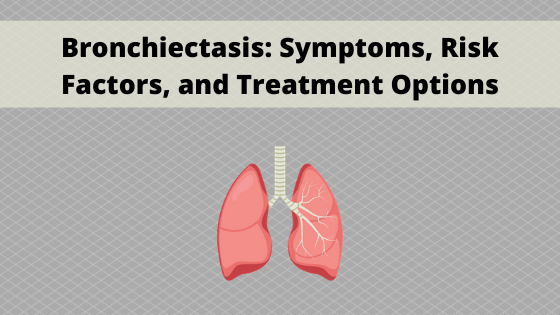
Anyone who reads our articles regularly should be pretty well-acquainted with the term chronic obstructive pulmonary disease (COPD). It’s one of the leading causes of death in the United States and it’s largely caused by preventable risk factors like cigarette smoke and air pollution. But there’s another common lung disease that’s often overlooked due to its many similarities with COPD. This disease is called bronchiectasis (brong-kee-EK-ta-sis).
Bronchiectasis is a condition that leads to permanent damage in the bronchial tubes, the main passageway leading to the lungs. As the airways widen and thicken, bacteria and mucus begin to build up leading to frequent infections and blockages. While there is no cure for bronchiectasis, it can be managed effectively and further damage can be prevented with a proper treatment plan.
While bronchiectasis has a lot in common with COPD, asthma, and cystic fibrosis (CF), these are all different conditions. In this post, we’ll tell you everything you need to know about bronchiectasis including symptoms, risk factors, treatment options, and more. We’ll also help you clarify these conditions so that you don’t get them confused. If you have any questions, be sure to fill out the contact form at the side of the page so that one of our respiratory specialists can reach out to you.
What is Bronchiectasis?
The respiratory system is much more complicated than it appears on the surface. While its primary function is to bring oxygen into the body and remove carbon dioxide, the lungs rely on a whole host of other factors in order for this process to work as it should.
One of the most important functions is the production and use of secretions like mucus, phlegm, and sputum. While you may know these as the annoying substances you cough up when you’re sick, they also play a vital role in the respiratory process.
Mucus — a sticky and slimy substance — is part of your innate immune system, your body’s natural defense against foreign invaders. It’s produced by the mucous membranes in the nose and sinuses. Phlegm is a similar substance but it’s produced in the lungs and the lower respiratory tract airways.

In a healthy person, mucus lines the throat, lungs, and nasal passages keeping it from drying out or becoming inflamed. It also acts as a sort of filter by trapping dust, pollen, and other airborne particles that could damage your lungs. It even has antibodies in it that work to locate and neutralize bacteria that enter your body.
Normally, mucus is able to flow freely throughout the respiratory system, but in a patient with bronchiectasis, it becomes stuck in the lungs due to abnormal dilation of the bronchi. This results in what the American Thoracic Society refers to as the “vicious cycle hypothesis” of bronchiectasis. Here’s an overview of what this looks like:
- Abnormal mucus clearance
- Bacterial colonization
- Neutrophil inflammation (proteases)
- Airway destruction (bronchiectasis)
- Repeat
Let’s take an in-depth look at each one of these steps.
Abnormal mucus clearance
Mucociliary clearance is one of the most essential innate defense mechanisms of the lungs. During this process, the protective mucus layer, cilia, and the airway surface liquid layer work to remove mucus and potentially harmful foreign substances from the lungs.
The cilia are specialized organelles found in the respiratory tract. They move in a rhythmic pattern that keeps mucus and harmful substances from getting trapped. However, a condition known as primary cilia dyskinesia (PCD) results in abnormal cilia and an inability of the body to clear mucus properly — as a result, this is often the first step in the development of bronchiectasis.
.png)
Asthma and Cystic Fibrosis (CF) are two other conditions associated with the pathogenesis of abnormal mucociliary clearance. Studies have found that asthma patients who have a difficult time managing their disease are more likely to experience complications that can lead to bronchiectasis.
Another factor that impacts the clearance of mucus is the contents and viscosity of the mucus itself. Cystic fibrosis (CF) is a genetic condition caused by a mutation in the cystic fibrosis transmembrane regulator (CFTR). This gene is responsible for providing instructions for creating a channel that transports particles into and out of the cells. This often impairs the flow of water in tissues, leading to viscous mucus that doesn’t flow freely.

Oftentimes, medical experts will categorize bronchiectasis into one of two groups: cystic fibrosis bronchiectasis (CFB) or non-cystic fibrosis bronchiectasis (NCFB). CFB patients will likely need to be treated for their underlying cystic fibrosis symptoms in order to see notable improvements whereas NCFB patients may require any number of treatments depending on what is causing the abnormal mucus clearance.
{{cta('b59df0c1-c4de-47a8-8e1c-0d33d4b414aa','justifycenter')}}
Bacterial colonization
The term “colonization” simply refers to the gathering of bacteria on a surface such as the airways, skin, mouth, or intestines. In the case of bronchiectasis, bacteria begin to colonize in the bronchial tubes, the airways that lead to the lungs. If the immune system isn’t able to neutralize the bacteria, it could lead to an infection.
.jpg)
Neutrophil inflammation (proteases)
A neutrophil is a white blood cell that fights infections and heals damaged tissue in the body. A low neutrophil count in the body (neutropenia) is associated with an increased risk of infection, whereas a high neutrophil count (neutrophilia) is typically caused by infection or injury.
Airway destruction (bronchiectasis)
The final part of the cycle is airway destruction. Repeated instances of infection and airway inflammation eventually lead to permanent and irreversible damage to the airways. Normally, the bronchial tubes narrow smoothly towards each lung allowing for air to easily transfer into and out of the body. However, inflammation caused by bronchiectasis will eventually cause the bronchial tubes to become scarred and ineffective. The cilia which help to move mucus will also be damaged.
Symptoms of Bronchiectasis
Bronchiectasis symptoms can take months or years to develop making it a difficult condition to detect. Like many lung conditions, bronchiectasis is often shrugged off as natural signs of aging or it’s confused with other conditions like asthma or COPD. Regardless, there are a number of symptoms you should look out for if you think you have bronchiectasis:

- A persistent, chronic cough
- Frequent production of sputum
- Chest pain
- Recurring chest infections
- shortness of breath
- Fatigue
- Weight loss
-
Coughing and wheezing
Since bronchiectasis is a progressive disease, you may notice symptoms becoming worse over time. For example, after getting sick, you may notice more chest pain, tightness or breathlessness. Severe bronchiectasis may lead to more serious conditions such as low oxygen levels, collapsed lung, respiratory failure, or even heart failure.
Common Causes of Bronchiectasis
Pneumonia
Pneumonia is an infection that can occur in one or both lungs. It causes inflammation in the alveoli, tiny air sacs at the end of the bronchial tubes that are responsible for transferring oxygen and carbon dioxide to and from the blood. Pneumonia can be caused by bacteria, viruses, and fungi.
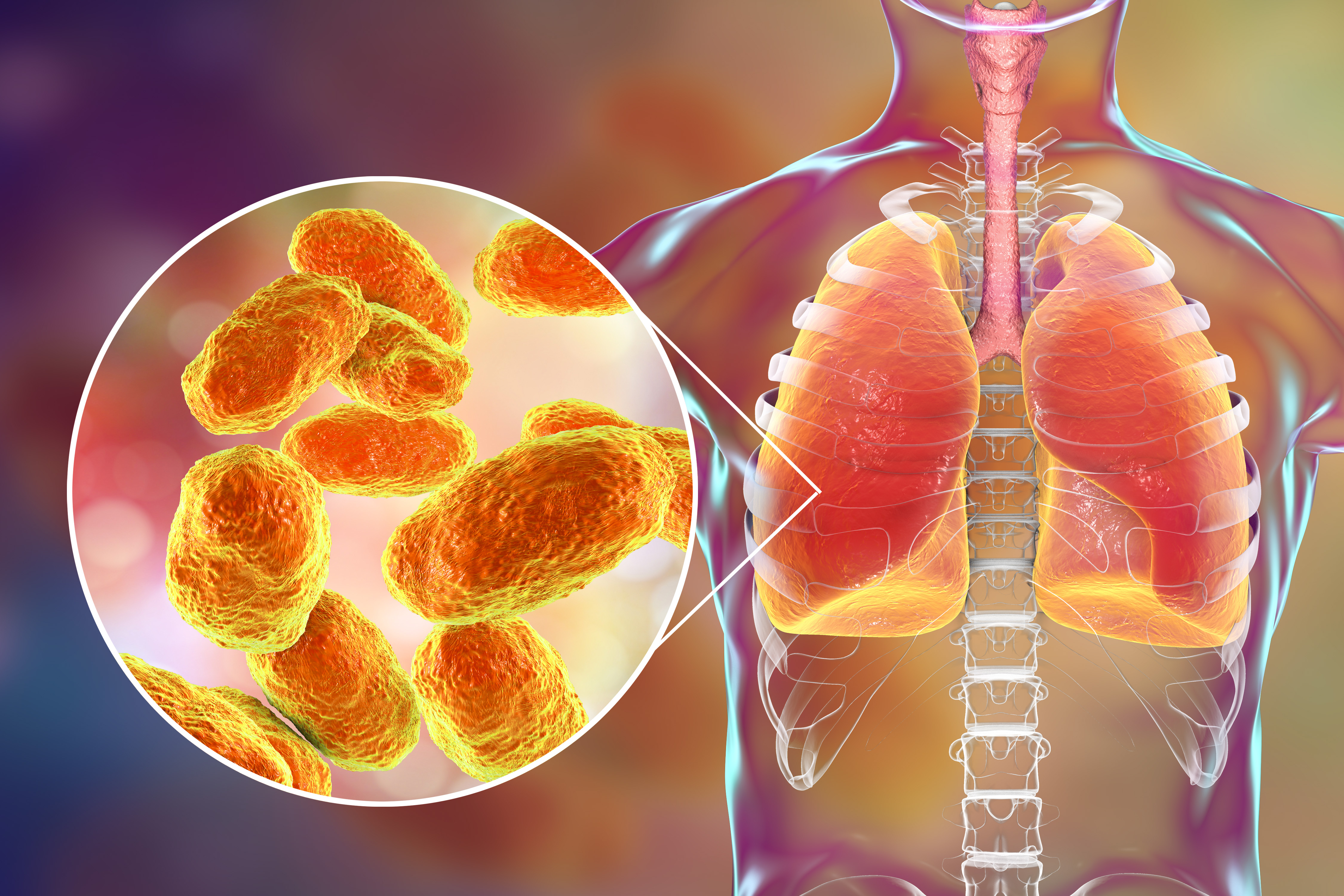
Tuberculosis
Tuberculosis is another common cause of bronchiectasis. This is a highly contagious infection that typically attacks the lungs, but it can spread to other parts of the body too including the spine and the brain. In the early 1900s, it was a leading cause of death, but it has a much better survival rate now because of the widespread use of antibiotics to treat it.
Aspiration
The term “aspiration” refers to a substance such as saliva, food, or medicine entering the lungs. Sometimes, this can be harmless, but other times it can lead to choking or even a serious infection known as aspiration pneumonia. This is typically not contagious and is usually treated with antibiotics.
Obstructive airway disease
Obstructive airway diseases like asthma, COPD, and cystic fibrosis can all be significant contributors to the onset of bronchiectasis because they impair a person’s ability to clear mucus and may even contribute to compromised immunity. Your doctor will closely monitor your condition to ensure that all underlying conditions are accounted for.
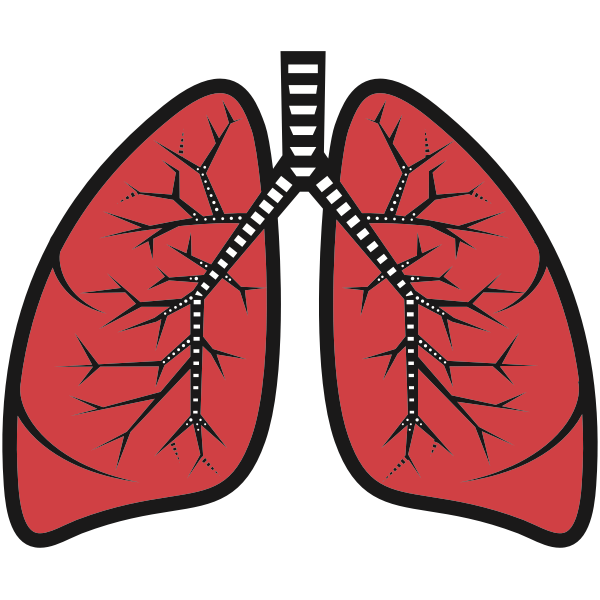
Risk Factors of Bronchiectasis
Risk factors of bronchiectasis include the following:

- Age — bronchiectasis can be contracted at all ages, but it’s much more common in people over the age of 65.
- Gender — bronchiectasis is more common in women due to hormone types and hormonal events such as menstrual cycles, pregnancy, and menopause.
- Cystic fibrosis — while only about half of bronchiectasis cases are caused by CF, 50 to 70 percent of children with CF have bronchiectasis by 3 to 5 years of age.
- Allergic bronchopulmonary aspergillosis
- Cilia function disorders
- Autoimmune disease
-
Immunodeficiency
How is Bronchiectasis Diagnosed?
Unfortunately, bronchiectasis is commonly underdiagnosed or misdiagnosed due to the fact that it has so many similar symptoms to conditions like asthma, bronchitis, and COPD. In these situations, it may go months or years without being treated effectively. To avoid this, your doctor may perform any number of tests that can rule out other conditions.
First and foremost, your doctor will take a look at your medical history. The following may indicate that you’re at a higher risk of contracting bronchiectasis:

- Family history of bronchiectasis
- A history of childhood respiratory symptoms or infection
- Smoking history
- Evidence of an inflammatory disorder (muscle pain, skin rashes, or joint problems)
- Frequent infective exacerbations
Next, your doctor will perform a clinical examination. This includes the following:
- Pulmonary function tests (PFT) such as spirometry or peak flow
- Testing for the presence of sputum
- Tests for a systemic inflammatory disorder
- Stethoscope testing to check for irregular noises in the lungs
-
Blood or sweat tests can be used to rule out different types of bronchiectasis (CF bronchiectasis or non-bronchiectasis)
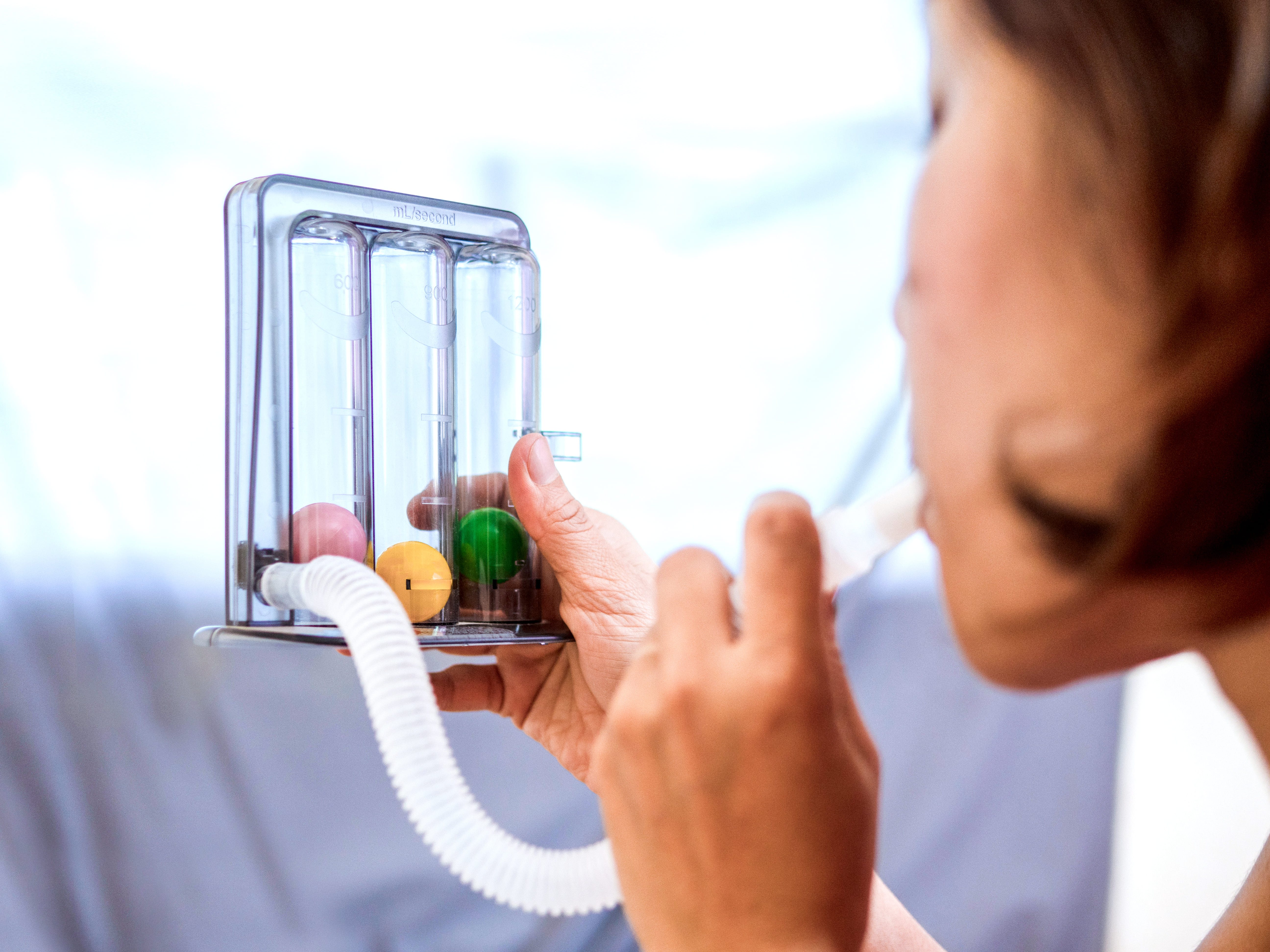
Last but not least, your doctor may use high-resolution computed tomography (HRCT) to check for bronchiectasis symptoms. He/she will look for the following:
- Bronchial wall dilation
- Lack of bronchial tapering
- Lobar collapse
- Mycetoma formation
-
Aspergillus fumigatus

HRCT tends to be the most conclusive diagnostic tool for determining the type and severity of bronchiectasis. However, your doctor will likely use many of the methods above in order to more accurately diagnose your condition.
How is Bronchiectasis Treated?
Bronchiectasis treatment is varied and depends on the underlying cause of the condition. In general, it can be treated with physical therapy, hydration, and medicines. However, if the bronchiectasis is isolated, your doctor may recommend surgery. Conversely, if the bronchiectasis is widespread and you risk respiratory failure, he/she may recommend oxygen therapy.
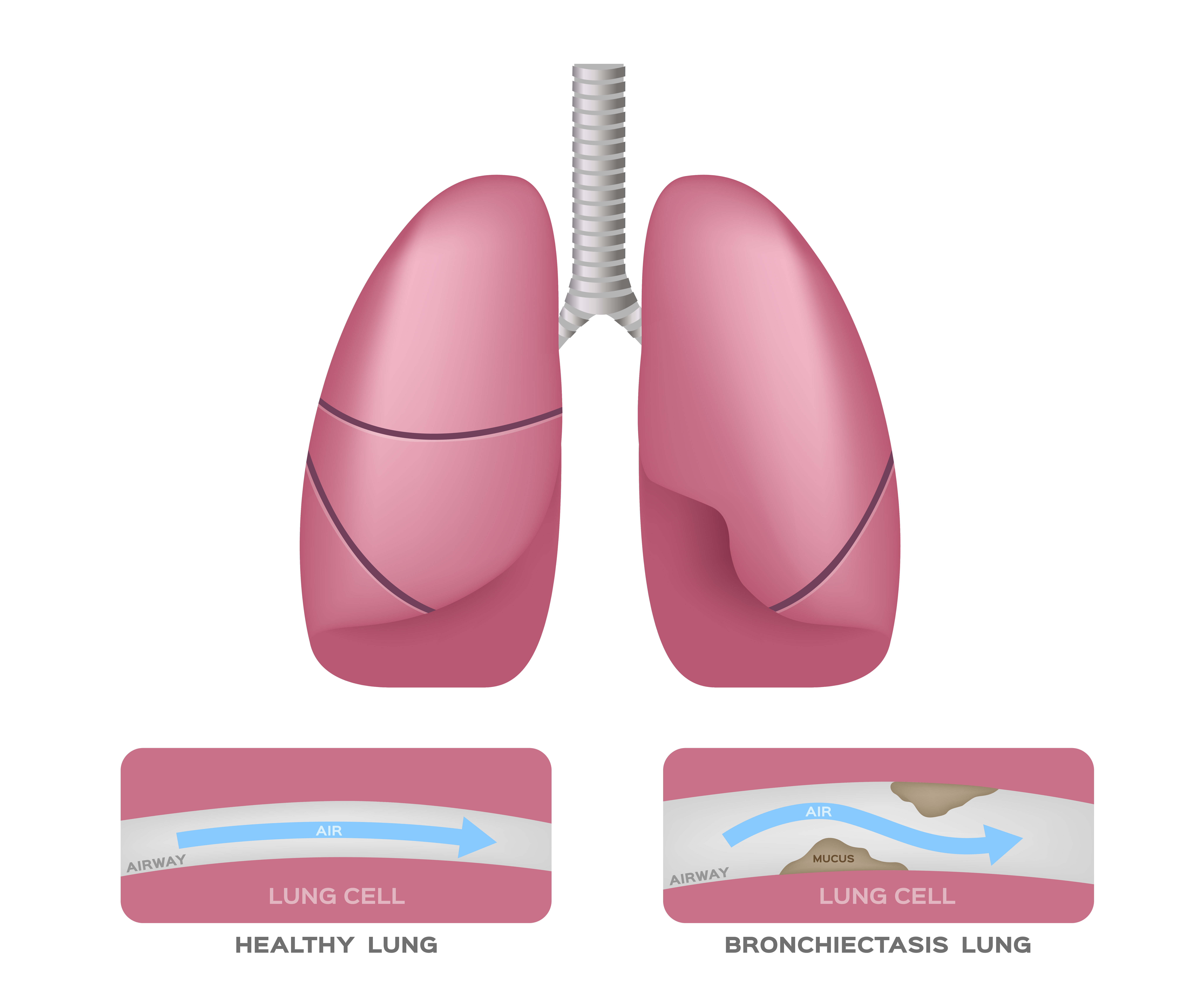
The objective of bronchiectasis treatment is to remove mucus from the lungs, treat infections quickly, treat underlying conditions that could be causing bronchiectasis, and to prevent any life-threatening complications. While bronchiectasis is a progressive disease, breaking the “vicious cycle” we discussed earlier can prove extremely effective in slowing the progression of the disease.
Antibiotics
An antibiotic is a type of medicine that helps prevent and stop infections that are caused by bacteria. If you’re suffering from a viral infection, your doctor will not prescribe antibiotics because they will not be effective.

Mucus Thinners
Because bronchiectasis patients have poor mucociliary clearance, they usually need to take medication that can assist with removing mucus from the lungs. Expectorants are a type of medication that loosens mucus so that it can be coughed up. Mucus thinners like acetylcysteine can also help with this process.
Hydration
Hydration is important for everyone, but for bronchiectasis patients, it could be a matter of life and death. Your doctor will likely put you on a strict diet requiring you to drink a certain amount of water each day. You might need to avoid alcohol and food that’s high in sodium as well.

Physical Therapy
Chest physical therapy (CPT) or physiotherapy is a chest percussion technique that’s used to loosen and dislodge mucus that gets stuck in the lungs. More often than not, this procedure is done by your doctor or a trained professional but self-treatment is sometimes advised with the use of tools like inflatable therapy vests. These use high-frequency airwaves to force mucus into your upper chest making it easier to clear.
Other Treatments
The above treatments are commonly used to treat bronchiectasis but in rare cases, other treatment options may be advised. These include bronchodilators that relax muscles in the airways; corticosteroids used to reduce inflammation; and oxygen therapy to raise blood oxygen levels. In very rare cases, surgery may be advised.
{{cta('fa8abc2a-1e88-4fa3-82fd-1cb5b9ed43b2','justifycenter')}}
Bronchiectasis Prevention Methods
While bronchiectasis is largely brought on by genetics, there are several lifestyle changes that you can make to reduce your chances of contracting it.

- Maintain proper hygiene, i.e. wash your hands, sanitize your home and workplace.
- Ensure you are up-to-date on annual influenza and pneumonia vaccines.
- Seek immediate treatment for lung symptoms like a chronic cough, chest pain, and chest tightness.
- Avoid harmful airborne irritants like car exhaust, fumes, and cigarette smoke.
As with most chronic lung conditions, early prevention and diagnosis are key. The sooner you can implement these prevention techniques, the better your outcome will be.
Bronchiectasis Versus COPD
While bronchiectasis and COPD may produce some similar symptoms, they’re very different diseases. COPD is one of the most common morbidities, affecting about 16 million people in the United States alone. It’s primarily caused by preventable means such as the inhalation of cigarette smoke and other harmful airborne contaminants — about 85 to 90 percent of COPD patients have smoked.
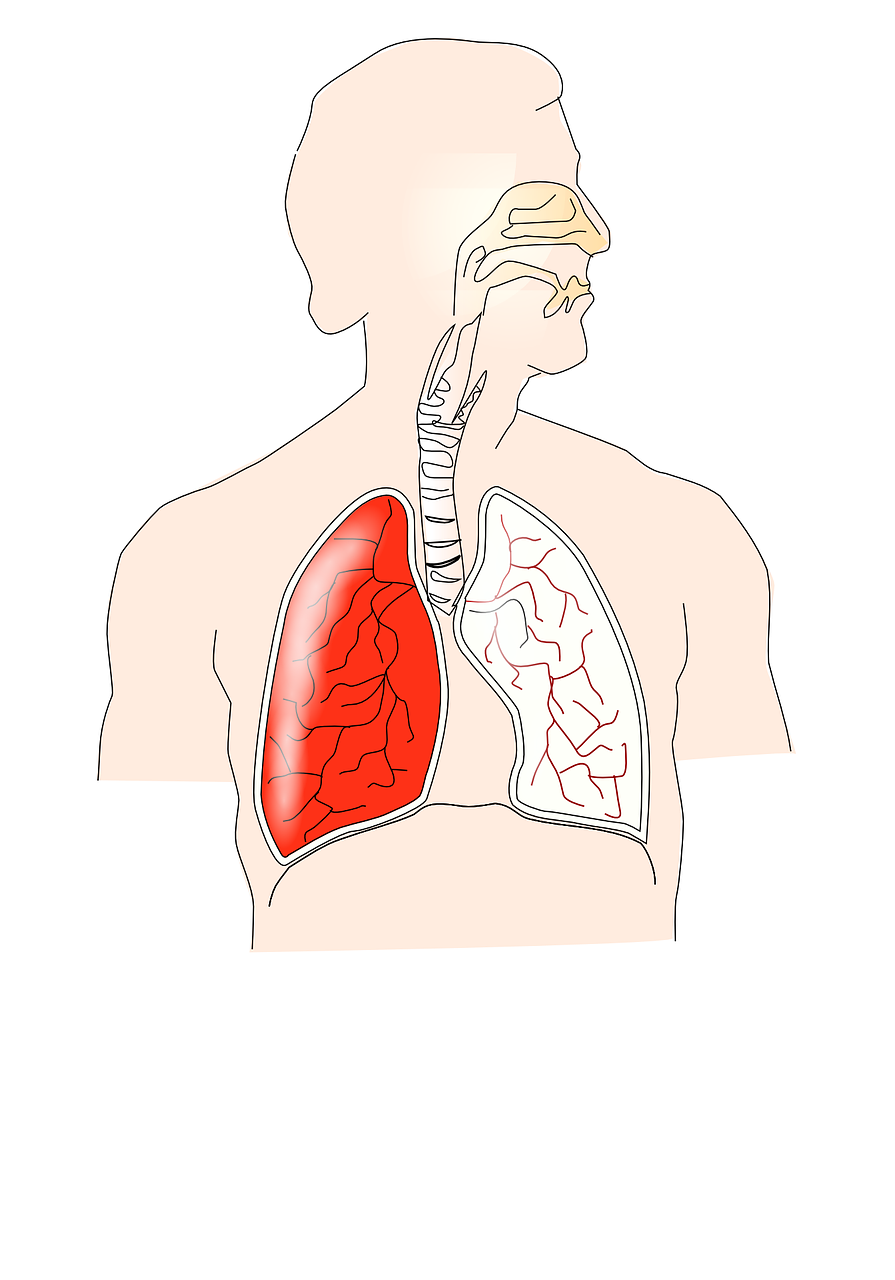
Bronchiectasis, on the other hand, is far less common than COPD. It’s estimated that 110,000 people have bronchiectasis in the United States and it affects people of all ages. Unlike COPD, lung damage from bronchiectasis is the result of severe and recurrent lung infections that damage the bronchial tubes, and in turn, lead to more infections. Studies have shown that comorbidities of COPD and bronchiectasis are common, but researches don’t yet know all the details about their correlation.
Conclusion
Bronchiectasis receives far less media attention than conditions like COPD, asthma, and lung cancer, but it’s one that everyone should be aware of regardless of your age. The good news is that, with early diagnosis and proper lifestyle changes, bronchiectasis patients will see a huge improvement in their quality of life and life expectancy.
Ultimately, your best course of action is to make healthy lifestyle choices like exercising frequently, maintaining a healthy diet, and avoiding cigarettes or other drugs. If you experience chest pain, frequent lung infections, or any of the symptoms listed above, be sure to visit your doctor or pulmonologist immediately.

